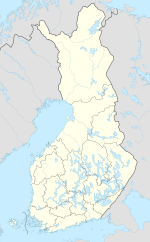
Finland has a population of over 5.53 million people and an average population density of 19 inhabitants per square kilometre (49/sq mi). This makes it the third most sparsely populated country in Europe, after Iceland and Norway. Population distribution is very uneven: the population is concentrated on the small southwestern coastal plain. About 85% live in towns and cities, with 1.5 million living in the Greater Helsinki area. In Arctic Lapland, on the other hand, there are only two inhabitants per square kilometre (5.2/sq mi).
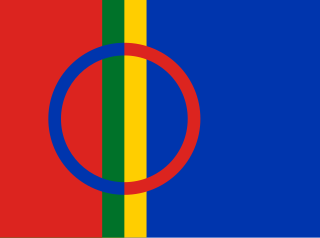
The Sámi are the traditionally Sámi-speaking people inhabiting the region of Sápmi, which today encompasses large northern parts of Norway, Sweden, Finland, and of the Kola Peninsula in Russia. The region of Sápmi was formerly known as Lapland, and the Sámi have historically been known in English as Lapps or Laplanders, but these terms are regarded as offensive by the Sámi, who prefer the area's name in their own languages, e.g. Northern Sámi Sápmi. Their traditional languages are the Sámi languages, which are classified as a branch of the Uralic language family.


Lapland is the largest and northernmost region of Finland. The 21 municipalities in the region cooperate in a Regional Council. Lapland borders the region of North Ostrobothnia in the south. It also borders the Gulf of Bothnia, Norrbotten County in Sweden, Troms and Finnmark County in Norway, and Murmansk Oblast and the Republic of Karelia in Russia. Topography varies from vast mires and forests of the South to fells in the North. The Arctic Circle crosses Lapland, so polar phenomena such as the midnight sun and polar night can be viewed in Lapland.

Enontekiö is a municipality in the Finnish part of Lapland with approx. 1,800 inhabitants. It is situated in the outermost northwest of the country and occupies a large and very sparsely populated area of about 8,400 square kilometres (3,200 sq mi) between the Swedish and Norwegian border. Finland's highest point, the Halti fell with a height of 1,324 metres (4,344 ft) above the mean sea level, lies in the north of Enontekiö, where the municipality occupies a part of the Scandinavian Mountains. The administrative centre of Enontekiö is the village of Hetta. About one fifth of the community's population are Sami people. Enontekiö's main industries are tourism and reindeer husbandry.

Inari Sámi is a Sámi language spoken by the Inari Sámi of Finland. It has approximately 300 speakers, the majority of whom are middle-aged or older and live in the municipality of Inari. According to the Sámi Parliament of Finland, 269 persons used Inari Sámi as their first language. It is the only Sámi language that is spoken exclusively in Finland. The language is classified as being seriously endangered, as few children learn it; however, more and more children are learning it in language nests. In 2018, Inari Sámi had about 400 speakers; due to revival efforts, the number had increased.
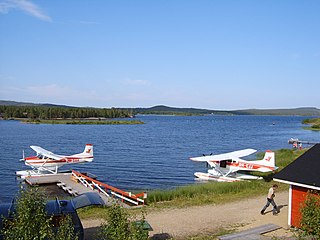
Lake Inari is the largest lake in Sápmi and the third-largest lake in Finland. It is located in the northern part of Lapland, north of the Arctic Circle. The lake is 117–119 metres (384–390 ft) above sea level, and is regulated at the Kaitakoski power plant in Russia. The freezing period normally extends from November to early June.

Inari is Finland's largest municipality by area, with four official languages, more than any other in the country. Its major sources of income are tourism, service industry and cold climate testing. With the Siida museum in the village of Inari, it is a center of Sami culture, widely known as the "capital of Sámi culture".
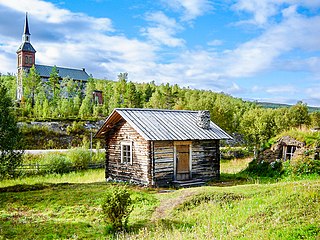
Utsjoki is a municipality in Finland, the northernmost in the country. It is in Lapland and borders Norway as well as the municipality of Inari. The municipality was founded in 1876. It has a population of 1,190 (28 February 2023) and covers an area of 5,372.00 square kilometres (2,074.14 sq mi) of which 227.51 km2 (87.84 sq mi) is water. The population density is 0.23 inhabitants per square kilometre (0.60/sq mi).

Pelkosenniemi is a municipality of Finland.

Skolt Sámi is a Uralic, Sámi language that is spoken by the Skolts, with approximately 300 speakers in Finland, mainly in Sevettijärvi and approximately 20–30 speakers of the Njuõʹttjäuʹrr (Notozero) dialect in an area surrounding Lake Lovozero in Russia. Skolt Sámi also used to be spoken in the Neiden area of Norway. It is written using a modified Roman orthography which was made official in 1973.

Neiden is a village area in the Sápmi area along the Finland–Norway border with about 250 inhabitants. Neiden, situated along the Neiden River, actually consists of two villages 12 kilometers apart, separated by the border of Norway and Finland. One village is in Sør-Varanger Municipality in Troms og Finnmark county, Norway, and the other village is in Inari Municipality in Lapland, Finland. Neiden is the official name in Norway and Näätämö in Finland. The European route E6 highway runs through the Norwegian village of Neiden. The village on the Finnish side is close to the border and has border shops.
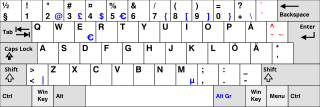
The two main official languages of Finland are Finnish and Swedish. There are also several official minority languages: three variants of Sami, as well as Romani, Finnish Sign Language and Karelian.

The Sámi homeland of Finland is the northernmost part of the Lappi (Lapland) administrative region in Finland, home of approximately half of Finland's Sámi population. The area is defined in and protected by the Finnish constitution to be autonomous on issues relating to the Sámi culture and language.

The Skolt Sámi or Skolts are a Sami ethnic group. They currently live in and around the villages of Sevettijärvi, Keväjärvi, Nellim in the municipality of Inari, at several places in the Murmansk Oblast and in the village of Neiden in the municipality of Sør-Varanger. The Skolts are considered to be the indigenous people of the borderland area between present-day Finland, Russia and Norway, i.e. on the Kola Peninsula and the adjacent Fenno-Scandinavian mainland. They belong to the eastern group of Sámi on account of their language and traditions, and are traditionally Orthodox rather than Lutheran Christians like most Sami and Finns.

Sevettijärvi is a village in the municipality of Inari, Finland approximately 120 kilometres (75 mi) north of downtown Inari. Neiden in Norway is approximately 35 kilometres (22 mi) away. The village's green, yet stark terrain opens up as Neiden approaches.
Kaamasmukka is a small village in Finland in Lapland in the northernmost Finnish municipality of Utsjoki. It is located 27 km east of the village of Karigasniemi directly at the main road 92 in the direction of the village of Kaamanen and there the Finnish national road 4 Helsinki-Utsjoki.

Sámi languages, in English also rendered as Sami and Saami, are a group of Uralic languages spoken by the Sámi people in Northern Europe. There are, depending on the nature and terms of division, ten or more Sami languages. Several spellings have been used for the Sámi languages, including Sámi, Sami, Saami, Saame, Sámic, Samic and Saamic, as well as the exonyms Lappish and Lappic. The last two, along with the term Lapp, are now often considered pejorative.

Inari or Aanaar Sámi are a group of Sámi people who inhabit the area around Lake Inari, Finland. They speak the Inari (Aanaar) Sámi language, which belongs to the eastern Sámi languages. There are an estimated 700–900 ethnic Inari Sámi in Finland, of whom approximately 300–400 speak Inari Sámi. They are the only group of Sámi who live within one state and one municipality. Inari Sámi are indigenous peoples of their area.
A variety of ethnic groups have long existed in Finland. Prominent examples include the Swedish speaking minority within the country and the Sami peoples in the north. With modern international migration to Finland, different ethnolinguistics groups populate the country, most prominently in Helsinki.
